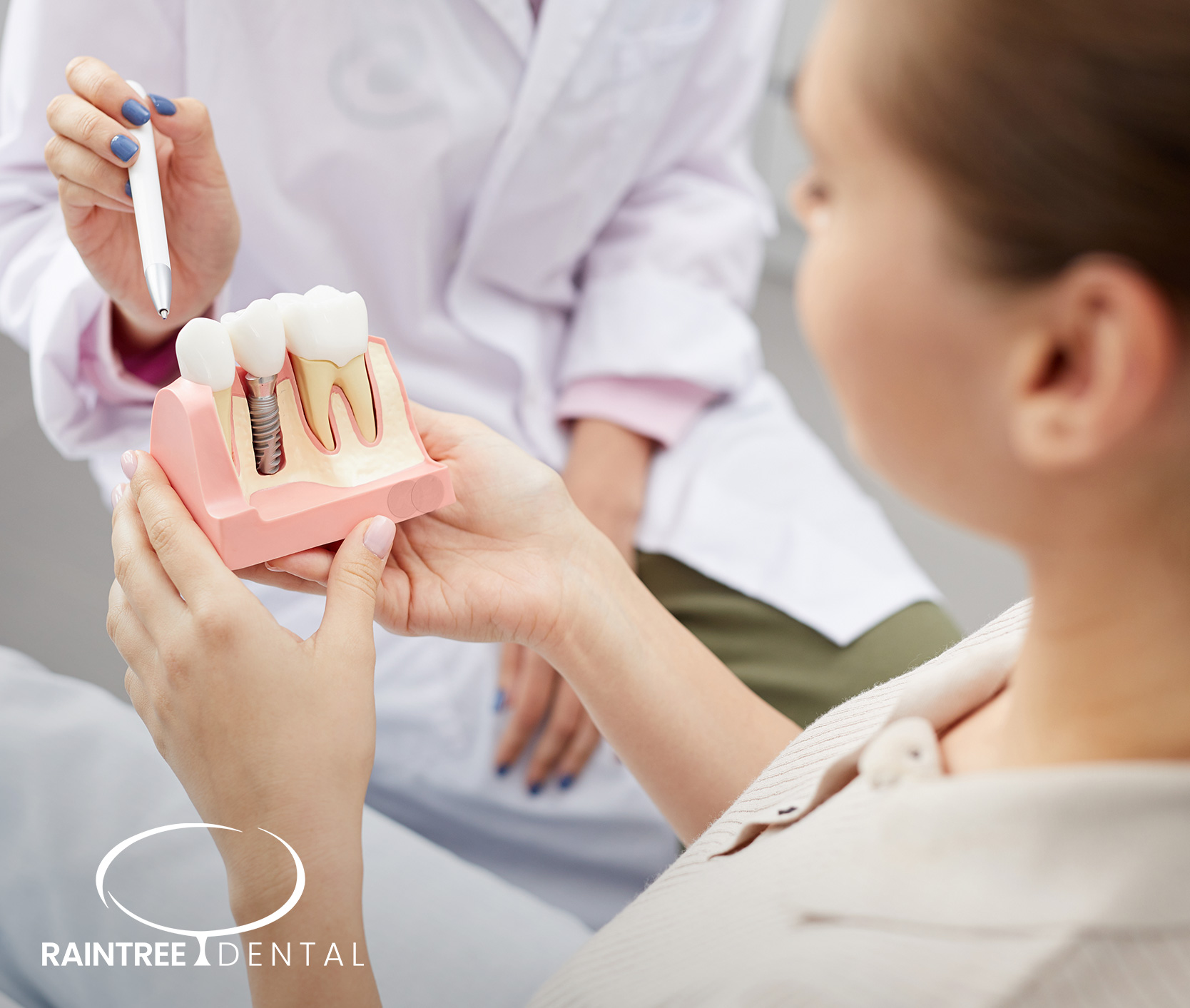Dental Implant Services
Dental implants look and feel like a natural tooth! It fits securely when you chew and speak. A single-tooth implant is a free-standing unit and does not involve treatment to the adjacent teeth. With dental implants, the surrounding teeth can remain untouched if they are healthy, and their strength and integrity may be maintained. The implant can stabilize your bite and help prevent problems with the jaw.
Think Missing Teeth is No Big Deal?Think Again.
There are plenty of reasons to replace a missing tooth. If a gap between your teeth is obvious when you smile or speak, it could be a cosmetic concern. Depending on their location, some missing teeth may affect your speech. A missing molar might not be noticeable when you talk or smile, but its absence can affect chewing and digestion of food.
When a tooth is missing, the biting force on the remaining teeth begins to change. As the bite changes to compensate for the lost tooth, there is a risk of extra pressure on and discomfort in the jaw joints. When teeth are missing, the bone that previously supported those teeth melts away, or deteriorates. This process is called bone resorption. If a missing tooth is not replaced, the surrounding teeth can shift. Harmful plaque and tarter can collect in new hard-to-reach places created by the shifting teeth. Over time, this may lead to tooth decay and periodontal disease and the loss of more teeth.
What Is a Dental Implant?
Dental implants look and feel like a natural tooth! It fits securely when you chew and speak. A single-tooth implant is a free-standing unit and does not involve treatment to the adjacent teeth. With dental implants, the surrounding teeth can remain untouched if they are healthy, and their strength and integrity may be maintained. The implant can stabilize your bite and help prevent problems with the jaw.
What Happens During the Tooth Implant Process?
Treatment generally is a three-part process that takes several months. We provide 100% of the services you will need right here in our Scottsdale office. During your first visit, we will take a 3-D scan of your jaw. This allow our implant dentist to see how much bone you have and where the nerves in your mouth are located. The implant is then surgically placed into the jaw, with the implant slightly above the top of the bone. A screw is inserted into the implant to prevent gum tissue and other debris from entering.
The gum then is secured over the implant, where it will remain covered for approximately three to six months while the implant fuses with the bone, a process called osseointegration.
There may be some swelling and/or tenderness for a few days after dental implant surgery, so pain medication usually is prescribed to alleviate the discomfort. A diet of soft foods, cold foods and warm soup often is recommended during the healing process.
In the second step, the implant is uncovered and the implant dentist attaches an extension, called a “post”, to the implant. The gum tissue is allowed to heal around the post. Once healing is complete, the implant and post will serve as the foundation for the new tooth.
In the final step, the implant dentist makes a custom artificial tooth called a “dental crown”, of a size, shape, color and fit that will blend with the other teeth. Once completed, the crown is attached to the implant post.
Am I a Candidate for Teeth Implants?
If you are missing a tooth but you are in good general health, with healthy gums and a jawbone that can support teeth implants, implant treatment may be an option for you. Health is more a factor than is your age. For example, chronic illnesses, such as diabetes or leukemia, may interfere with healing after dental implant surgery. And if you use tobacco, you are at greater risk of experiencing gum disease, which can weaken the bone and tissues needed to support the teeth implants.




